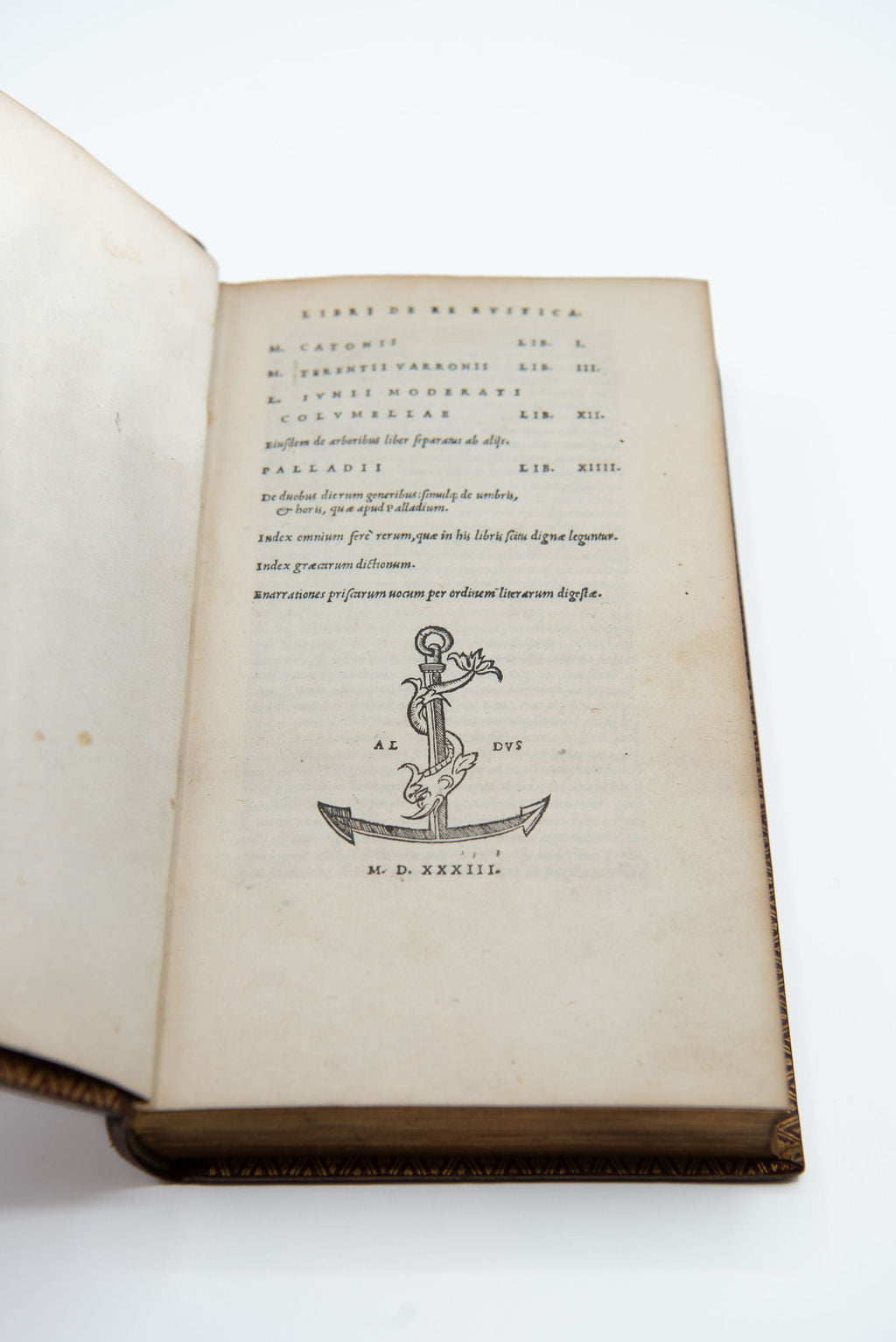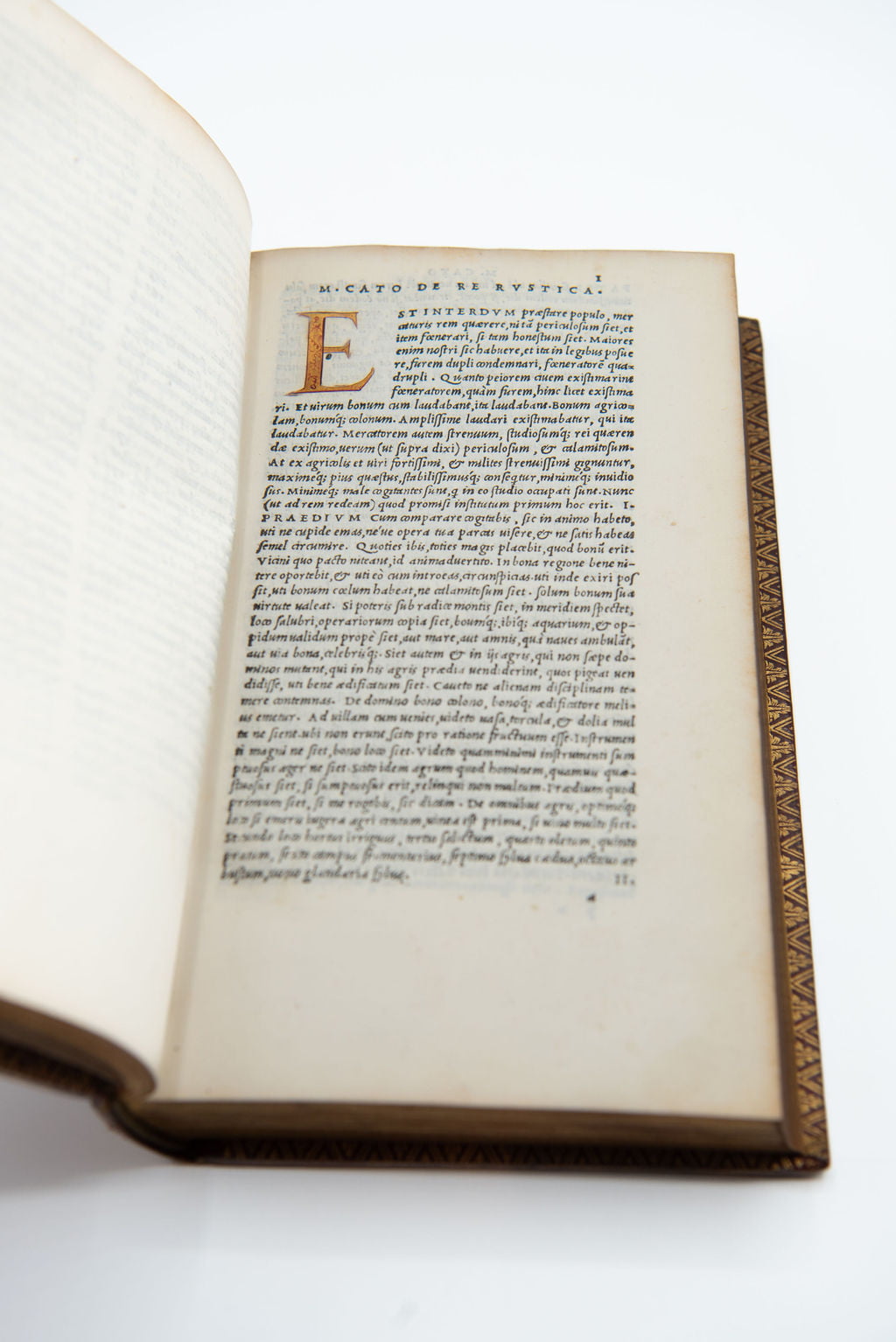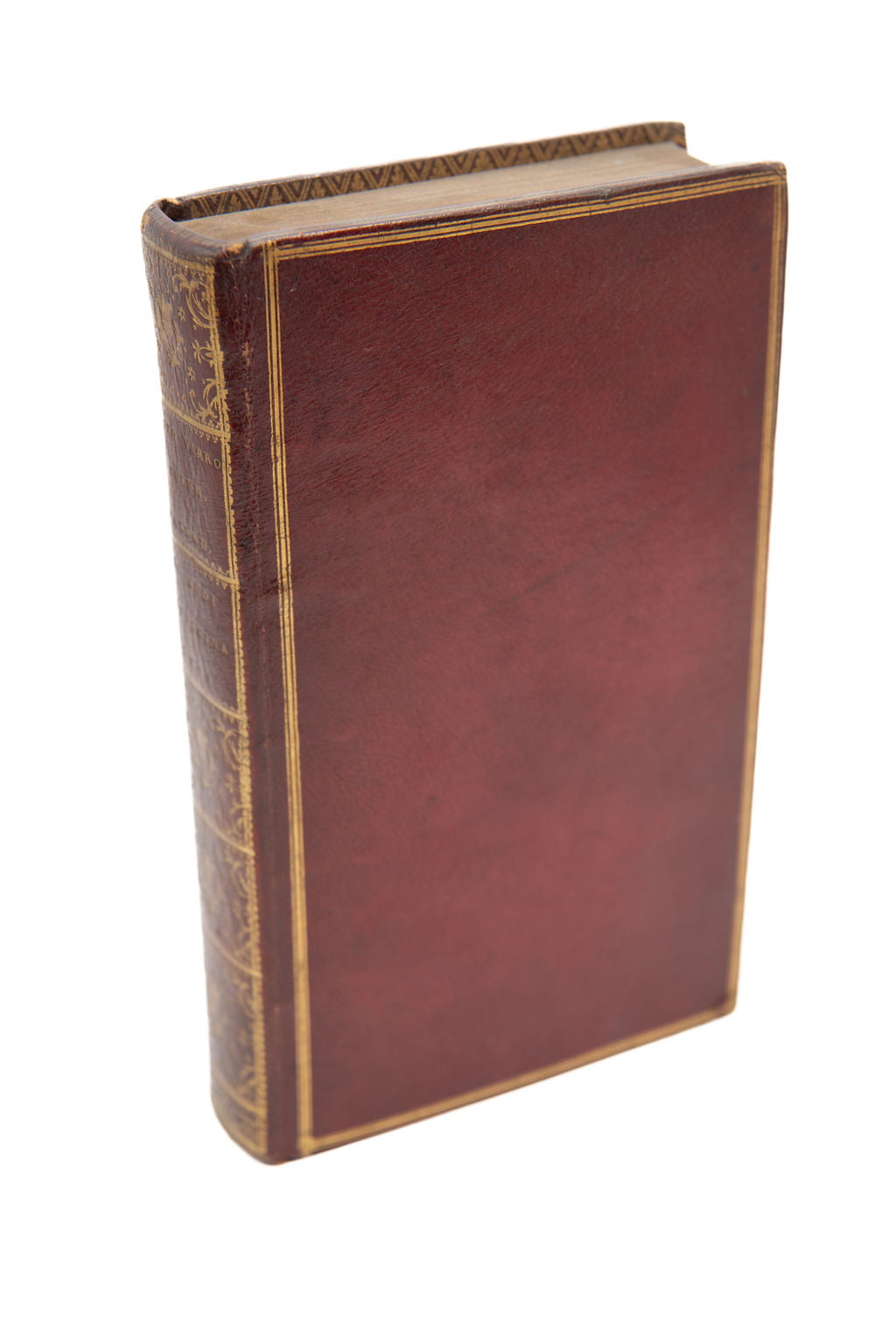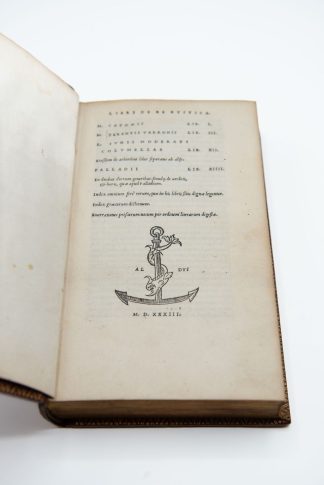CATO, Marcus Porcius, VARRO, Marcus Terentius, COLUMELLA, Lucius Moderatus, PALLADIUS, Rutilius Taurus
GILT INITIALS
Libri de re rustica [Scriptores rei rusticae]
Venice, in aedibus haer. Aldo Manuzio & haer. Andrea Torresano, 1533£4,250.00
8vo. ff. (liv) 295 (i). Italic letter with Roman. Initials supplied in gold with red penwork, printer’s device to t-p and final ep, a few woodcuts of agricultural instruments and land measurements, a.e.g. Very light age yellowing, the odd marginal spotting. A fine, very well-margined copy, crisp and clean, in early C18 French crimson morocco in the style of Derome, marbled paper to pastedowns, cover edges gilt to a triple rule, gilt inner dentelles. Spine in seven compartments, with large gilt thistle, rosettes and foliage, gilt title and printer’s name. Armorial bookplate of William George Arthur Ormsby-Gore, 4th Baron Harlech, to front pastedown, silk marker.
The early initials painted gold with red penwork were probably produced in France by an anonymous artist. They reflect types based on Roman epigraphy, especially Geoffrey Tory’s manual ‘Champfleury’ (Paris, 1529). They may have been inspired by the gilt initials often executed for Jean Grolier. The finely gilt thistles on the spine closely resemble those in Barber, ‘Printed Books and Bookbindings’, FL. 75, W.Cat.212.
A fine, large copy of this successful collection of famous classical texts on agriculture, edited by the friar and humanist Giovanni Giocondo and integrated with material from the Giunta edition of 1521. The thorough subject index which precedes the texts was devised for a C16 readership interested in the classical rustic virtues of landownership and the practical aspects of country life, with topics as varied as the best place to set up a beehive, horticulture, remedies for dogs with flees and sick horses, ways to scare snakes off stables and regulations for workers. Marcus Porcius Cato (234-149 BC) was a Roman statesman, military officer and author. His only complete, extant work, ‘De Agri Cultura’ (c.160 BC) is a manual on the management of a country estate reliant on slaves, with a special interest in the cultivation of vines. A prolific writer patronised by Augustus, Marcus Terentius Varro (116-107BC) based his ‘Rerum rusticarum libri tres’ on his direct experience of farming. He notably warns his readers to avoid marshlands, where ‘animalia minuta’ that cannot be seen by the human eye may be breathed in or swallowed and cause illnesses. A soldier and farmer, Lucius Moderatus Columella (4-70AD) is best known for his ‘Res rustica’ in twelve volumes and the shorter ‘De arboribus’. Intended as a manual of husbandry, ‘Res rustica’ deals with a wealth of activities including the cultivation of vines and olives, the farming and treatment of animals, and the management of workers. ‘De arboribus’ contains information on horticulture, subdivided by kind of tree. Inspired by Columella and much admired in the medieval period, Palladius’s (C4-5AD) ‘Opus agriculturae’ (or ‘De re rustica’) provides an account of the typical monthly activities of a Roman farm, and mentions the utility of building mills over abundant waterways to grind wheat. These texts, first published together in Venice in 1472, enjoyed wide circulation in C16 Italy and France.
This copy was part of the library at Glyn Cywarch, owned by William George Arthur Ormsby-Gore, 4th Baron Harlech.USTC 800776; Brunet V, 246; Rénouard 109:9; Graesse V, 331: ‘Texte de la première Aldine avec quelques corrections empruntées à la Juntine de 1521.’In stock





